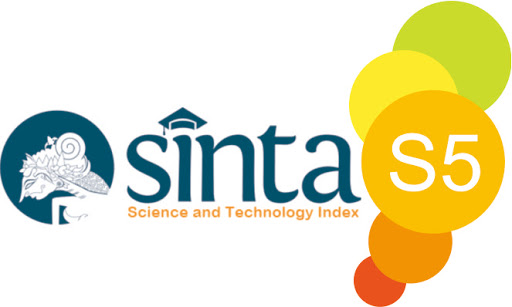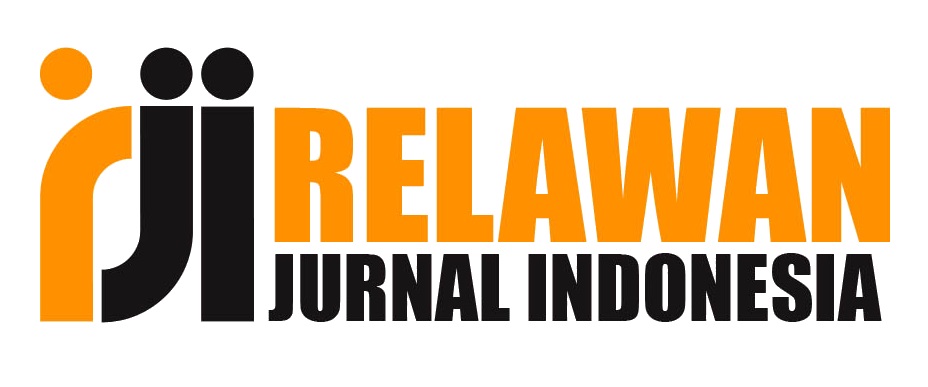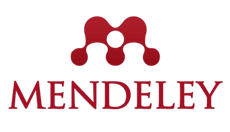Peran Program Kebijakan Sekolah tentang Penyalahgunaan Zat dan Perasaan Aman dalam Meningkatkan Literasi Siswa
DOI:
https://doi.org/10.57176/jn.v5i1.183Keywords:
literasi, penyalahgunaan zat, rasa aman, survei lingkungan belajarAbstract
Tingkat literasi membaca siswa SMA di Indonesia masih tergolong rendah dan belum menunjukkan capaian yang stabil dari tahun ke tahun. Data nasional mencatat adanya penurunan skor literasi pada periode 2021–2022 di seluruh kelompok pendidikan, termasuk sekolah keagamaan, sekolah luar biasa, dan SMA umum. Meskipun terjadi peningkatan pada tahun berikutnya, kondisi ini menandakan perlunya perhatian serius terhadap upaya peningkatan literasi di tingkat SMA. Penelitian kuantitatif (cross-sectional study) ini bertujuan untuk menganalisis pengaruh program kebijakan sekolah terkait pencegahan penyalahgunaan zat dan rasa aman di sekolah terhadap capaian literasi peserta didik. Data diperoleh dari Rapor Pendidikan 2023 (data sekunder) yang melibatkan 6.553 siswa sebagai responden. Metode analisis yang digunakan adalah regresi linear berganda dan uji mediasi dengan bantuan perangkat lunak JASP. Hasil penelitian menunjukkan bahwa program pencegahan penyalahgunaan zat memiliki pengaruh positif terhadap rasa aman di sekolah, dan rasa aman tersebut secara signifikan memediasi hubungan antara program tersebut dan capaian literasi siswa (mediasi parsial; p < 0,001). Selain itu, kedua variabel tersebut secara simultan terbukti memengaruhi tingkat literasi peserta didik. Temuan ini mempertegas pentingnya penguatan lingkungan sekolah yang aman, nyaman, dan mendukung kesejahteraan psikologis siswa untuk mendorong capaian literasi yang lebih optimal. Penelitian ini merekomendasikan pengembangan kebijakan integratif yang memadukan aspek literasi, kesehatan mental, dan pencegahan penyalahgunaan zat sebagai upaya menciptakan iklim belajar yang positif dan inklusif bagi seluruh warga sekolah.
________________________________________________________________________________________
The literacy level of high school students in Indonesia remains relatively low and has not demonstrated stable progress over recent years. National data indicate a decline in literacy scores during the 2021–2022 period across various educational groups, including religious schools, special needs schools, and general high schools. Although improvements were observed in the subsequent year, this condition highlights the urgent need for sustained efforts to enhance literacy at the senior high school level. This study aims to analyze the influence of school policy programs on substance abuse prevention and the sense of safety within schools on students’ literacy achievements. The data were drawn from the 2023 Education Report, involving 6,553 student respondents. The analysis employed multiple linear regression and mediation analysis using the JASP software. The findings reveal that school-based substance abuse prevention programs have a positive effect on students’ sense of safety at school. Furthermore, this sense of safety significantly mediates the relationship between the programs and students’ literacy outcomes (partial mediation; p < 0.001). Additionally, both variables simultaneously influence students’ literacy levels. These results emphasize the importance of fostering a safe, supportive, and inclusive school environment to enhance students’ literacy achievements. This study recommends the development of integrated policies that combine literacy promotion, mental health initiatives, and substance abuse prevention programs as part of broader efforts to establish a positive and conducive learning climate for all school community members.Keywords: learning environment survey, literacy, sense of safety, substance abuse
References
Angeli, C., & Miliou, O. (2024). The effects of a project-based learning environment on the development of college students’ digital literacy skills. 2603–2610. https://www.learntechlib.org/primary/p/224350/
Aron, A., Coups, E. J., & Aron, E. N. (2012). Statistics for Psychology. Pearson Education.
Baafi, R. K. A. (2020). School Physical Environment and Student Academic Performance. Advances in Physical Education, 10(02), 121–137. https://doi.org/10.4236/ape.2020.102012
Barati, M., Bashirian, S., Jormand, H., Babamiri, M., & Rezapur-Shahkolai, F. (2022). Can substance abuse media literacy increase prediction of drug use in students? BMC Psychology, 10(1). https://doi.org/10.1186/s40359-022-00860-2
Berkowitz, R., Moore, H., Astor, R. A., & Benbenishty, R. (2017). A Research Synthesis of the Associations Between Socioeconomic Background, Inequality, School Climate, and Academic Achievement. Review of Educational Research, 87(2), 425–469. https://doi.org/10.3102/0034654316669821
Bidawi, H. F. N., Nasution, I., Isnaini, I., Hadi, F., Annisa, A., Ariesky, R. Z., & Sagala, A. R. A. (2024). Analisis Perubahan Kesadaran dan Perilaku Siswa terhadap Bahaya Narkoba melalui Pendidikan Anti Narkoba. Jurnal Pendidikan Tambusai, 8(2), 25679–25688.
Centers for Disease Control and Prevention. (2024). Safe and supportive school environments. In 2024. https://www.cdc.gov/healthy-youth/what-works-in-schools/safe-supportive-school-environments.html
Cornell, D., Shukla, K., & Konold, T. R. (2016). Authoritative School Climate and Student Academic Engagement, Grades, and Aspirations in Middle and High Schools. AERA Open, 2(2). https://doi.org/10.1177/2332858416633184
Côté-Lussier, C., & Fitzpatrick, C. (2016). Feelings of Safety at School, Socioemotional Functioning, and Classroom Engagement. Journal of Adolescent Health, 58(5), 543–550. https://doi.org/10.1016/j.jadohealth.2016.01.003
DePaoli, J., & McCombs, J. (2023). Safe Schools, Thriving Students: What We Know About Creating Safe and Supportive Schools. Learning Policy Institute. https://doi.org/10.54300/701.445
Fossum, S., Skokauskas, N., Handegård, B. H., Hansen, K. L., & Kyrrestad, H. (2023). The Significance of Traditional Bullying, Cyberbullying, and Mental Health Problems for Middle School Students Feeling Unsafe in the School Environment. Scandinavian Journal of Educational Research, 67(2), 281–293. https://doi.org/10.1080/00313831.2021.2006305
Ghani, N., Jamian, A. R., & Abdul Jobar, N. (2022). Environmental Impact of Reading Literacy Development. Malaysian Journal of Social Sciences and Humanities (MJSSH), 7(4), e001425. https://doi.org/10.47405/mjssh.v7i4.1425
Gilemkhanova, E. (2019). The relationship of socio-psychological security and academic performance of the educational environment of municipalities. Education & Self Development. https://doi.org/10.26907/ESD14.2.06
Haridza, R. (2024). Exploring the Relationship between Safe Learning Environments and Literacy Skills in Majority Muslim Southeast Asian Nations: Insights from PISA 2022. Muslim Education Review. https://doi.org/10.56529/mer.v3i2.318
Hayes, A. F. (2019). Introduction to Mediation, Moderation, and Conditional Process Analysis: A regression based approach. In The Designing for Growth Field Book. https://doi.org/10.7312/lied18789-006
Holm, P. (2025). Impact of digital literacy on academic achievement: Evidence from an online anatomy and physiology course. E-Learning and Digital Media, 22(2), 139–155. https://doi.org/10.1177/20427530241232489
Ihekoronye, E. O. (2020). Conducive School Environment :A Necessary Factor for Effective Teaching and Learning in Public Secondary Schools in Gwagwalada Area Council of Abuja. Bsujem, 2(1), 203–213.
Indrawati, S. M., & Kuncoro, A. (2021). Improving Competitiveness Through Vocational and Higher Education: Indonesia’s Vision For Human Capital Development In 2019–2024. Bulletin of Indonesian Economic Studies, 57(1), 29–59. https://doi.org/10.1080/00074918.2021.1909692
JASP. (2024). JASP (Version 0.18.3.0) [Computer software].
Joo, S. H., & Kim, E. S. (2019). Impact of error structure misspecification when testing measurement invariance and latent-factor mean difference using MIMIC and multiple-group confirmatory factor analysis. Behavior Research Methods, 51(6), 2688–2699. https://doi.org/10.3758/s13428-018-1124-6
Jormand, H., Bashirian, S., Barati, M., Rezapur-Shahkolai, F., & Babamiri, M. (2022). Evaluation of a web-based randomized controlled trial educational intervention based on media literacy on preventing substance abuse among college students, applying the integrated social marketing approach: A study protocol. Trials, 23(1). https://doi.org/10.1186/s13063-022-06913-6
Kemendikbudristek. (n.d.). Rapor Pendidikan.
Kemendikdasmen. (2025). Portal Data Pendidikan. https://data.kemendikdasmen.go.id/
Kinnunen, J. M., Paakkari, L., Rimpelä, A. H., Kulmala, M., Richter, M., Kuipers, M. A. G., Kunst, A. E., & Lindfors, P. L. (2022). The role of health literacy in the association between academic performance and substance use. European Journal of Public Health, 32(2), 182–187. https://doi.org/10.1093/eurpub/ckab213
Kumar, R. (2014). Research Methodology: A Step-by-Step Guide for Beginners. SAGE.
Lacoe, J. (2020). Too Scared to Learn? The Academic Consequences of Feeling Unsafe in the Classroom. Urban Education, 55, 1385–1418. https://doi.org/10.1177/0042085916674059
Li, J., Bai, J., Zhu, S., & Yang, H. H. (2024). Game-Based Assessment of Students’ Digital Literacy Using Evidence-Centered Game Design †. Electronics (Switzerland), 13(2), 1–19. https://doi.org/10.3390/electronics13020385
Maslow, A. H. (1943). Conflict, frustration, and the theory of threat. The Journal of Abnormal and Social Psychology, 38(1), 81–86. https://doi.org/10.1037/h0054634
Mori, Y., Tiiri, E., Khanal, P., Khakurel, J., Mishina, K., & Sourander, A. (2021). Feeling Unsafe at School and Associated Mental Health Difficulties among Children and Adolescents: A Systematic Review. Children, 8(3), 232. https://doi.org/10.3390/children8030232
Njonge, T. (2023). Influence of Psychological Well-Being and School Factors on Delinquency, During The Covid-19 Period Among Secondary School Students in Selected Schools in Nakuru County: Kenya. International Journal of Research and Innovation in Social Science, 7(2), 1175–1189.
OECD. (2023). Pisa 2022 Results. In Factsheets: Vol. I (p. 29). https://www.oecd-ilibrary.org/education/pisa-2022-results-volume-i_53f23881-en%0Ahttps://www.oecd.org/publication/pisa-2022-results/country-notes/germany-1a2cf137/
Pusat Penilaian Pendidikan. (2023). Laporan Survei Lingkungan Belajar 2023. https://pusmendik.kemdikbud.go.id/an/page/news_detail/survei-lingkungan-belajar
Puslitdatin BNN. (2022). Indonesia Drugs Report 2022. https://perpustakaan.bnn.go.id/sites/default/files/Buku_Digital_2022-08/BK0329_2022_Indonesia_Drugs_Report_2022.pdf
Raysharie, P. I., Harinie, L. T., Inglesia, N., Vita, V., Wati, S., Sianipar, B., Ongki, O., Pasha, R., Abdurrahman, M., Fadilla, K. A., & Putri, F. (2023). The Effect of Student’s Motivation on Academic Achievement. Journal Pendidikan Ilmu Pengetahuan Sosial, 15(1), Article 1. https://doi.org/10.37304/jpips.v15i1.9552
Rusmilawati, Arif, M. R., & Rukaiyah, S. (2025). Peran Kepemimpinan dan Budaya Sekolah dalam Mewujudkan Keberhasilan Program Sekolah Sehat dan Ramah Anak di SD Negeri 013 Kecamatan Penajam Kabupaten Penajam Paser Utara. 5.
Salih, F., & Noori, A. (2021). Effectiveness of an Educational Program on Knowledge of High School Students about Substance Abuse in Kirkuk City. Iraqi National Journal of Nursing Specialties, 34(1), 95–102. https://doi.org/10.58897/injns.v34i1.465
Salma, A. & Madzanatun. (2019). Analisis Gerakan Literasi Sekolah Terhadap Minat Baca Siswa Siswa Sekolah Dasar. Mimbar PGSD Undiksha, 7, 122–127.
Scull, T. M., Kupersmidt, J. B., & Weatherholt, T. N. (2017). The effectiveness of online, family‐based media literacy education for substance abuse prevention in elementary school children: Study of the Media Detective Family Program. Journal of Community Psychology, 45(6), 796–809. https://doi.org/10.1002/jcop.21893
Sitorus, J. P. A., Fitri, P. S. A., & Hartati, R. (2025). Studytok as A Tool for Promoting Media Literacy: Insight From University Students. Sintaksis : Publikasi Para Ahli Bahasa Dan Sastra Inggris, 3(1), 50–65. https://doi.org/10.61132/sintaksis.v3i1.1243
Tatiana, B., Kobicheva, A., Tokareva, E., & Mokhorov, D. (2022). The relationship between students’ psychological security level, academic engagement and performance variables in the digital educational environment. Education and Information Technologies, 27(7), 9385–9399. https://doi.org/10.1007/s10639-022-11024-5
Tremblay, M., Baydala, L., Khan, M., Currie, C., Morley, K., Burkholder, C., Davidson, R., & Stillar, A. (2020). Primary Substance Use Prevention Programs for Children and Youth: A Systematic Review. Pediatrics, 146(3), e20192747. https://doi.org/10.1542/peds.2019-2747
UNESCO. (2023). Global Education Monitoring Report 2023: Technology in education: A tool on whose terms? (1st ed.). GEM Report UNESCO. https://doi.org/10.54676/uzqv8501
Wasike, P. K., Khasakhala, E. O., & Ayaga, G. N. (2024). Influence of Learners’ Environments on Learners’ Literacy Outcomes of Early Years of Education. African Journal of Empirical Research, 5(1), 241–248. https://doi.org/10.51867/ajernet.5.1.24
Williams, S., Schneider, M., Wornell, C., & Langhinrichsen-Rohling, J. (2018). Student’s Perceptions of School Safety: It Is Not Just About Being Bullied. The Journal of School Nursing, 34(4), 319–330. https://doi.org/10.1177/1059840518761792
Wingard, A. K., Hermawan, H. D., & Dewi, V. R. (2020). The Effects of Students’ Perception of the School Environment and Students’ Enjoyment in Reading towards Reading Achievement of 4th Grades Students in Hong Kong. Indonesian Journal on Learning and Advanced Education (IJOLAE), 68–74. https://doi.org/10.23917/ijolae.v2i2.9350
Wulandari, A., & Nugroho, C. (2021). Digital Literacy of Teenagers in Kulonprogo District, Yogyakarta, Indonesia. Spirit Publik: Jurnal Administrasi Publik, 16(1), Article 1. https://doi.org/10.20961/sp.v16i1.50730
Yani, A. (2022). Pengaruh Literasi Kesehatan Melalui E-Health Dpa (Drugs Prevention Among Adolescents) Terhadap Resiliensi Remaja Awal Untuk Mencegah Penggunaan Napza Di Kota Palu. Yani, Ahmad (2022) Pengaruh Literasi Kesehatan Melalui e-Health DPA (Drugs Prevention Among Adolescents) Terhadap Resiliensi Remaja Awal Untuk Mencegah Penggunaan NAPZA Di Kota Palu = Effect of Health Literacy through e-Health DPA (Drugs Preventi, 1–84.
Downloads
Published
How to Cite
Issue
Section
License
Copyright (c) 2025 Tina Deviana, Valendra Granitha Shandika Puri, Kuni Saffana

This work is licensed under a Creative Commons Attribution-ShareAlike 4.0 International License.
You are free to:
- Share — copy and redistribute the material in any medium or format for any purpose, even commercially.
- Adapt — remix, transform, and build upon the material for any purpose, even commercially.
- The licensor cannot revoke these freedoms as long as you follow the license terms.
Under the following terms:
- Attribution — You must give appropriate credit , provide a link to the license, and indicate if changes were made . You may do so in any reasonable manner, but not in any way that suggests the licensor endorses you or your use.
- ShareAlike — If you remix, transform, or build upon the material, you must distribute your contributions under the same license as the original.
- No additional restrictions — You may not apply legal terms or technological measures that legally restrict others from doing anything the license permits.
Notices:
You do not have to comply with the license for elements of the material in the public domain or where your use is permitted by an applicable exception or limitation .
No warranties are given. The license may not give you all of the permissions necessary for your intended use. For example, other rights such as publicity, privacy, or moral rights may limit how you use the material.
















